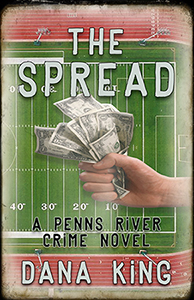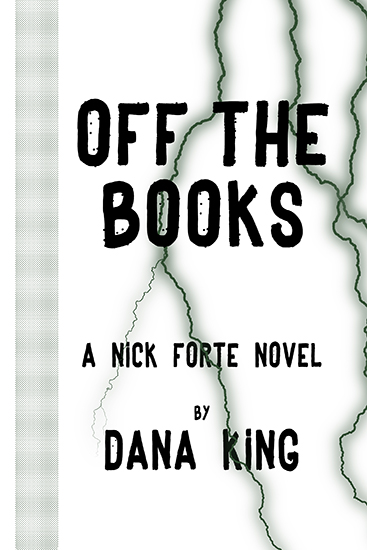Beth
Kelly hit the ground running with her first OBAAT post, and got me to
thinking why I enjoy some Westerns so much, others only a little and
(unfortunately) the rest, not at all. It was The Beloved Spouse who reminded
me: the best Westerns are very much noir stories, set fifty to seventy-five
years before film noir became a thing.
The stereotypical Western has become a cultural cliché: white
hats = good guys, black hates = bad guys. Anyone with a true understanding of “American
Exceptionalism” can figure that can’t have been how things really were. Better
and more honest histories have since been written, and we now know “good guy”
and “bad guy” were often situational, as many Western legends walked on both
sides of that road, sometimes simultaneously. (Wyatt Earp a prime example.)
The earliest Western I know of to embrace these noirish
roots was Shane
(1953). Alan Ladd plays a gunfighter who tries to give
it up, only to learn his past is not so easily eluded, and good intentions
cannot alter one’s destiny. There’s no secret how the film will play out once
Jack Palance makes his screen debut, but earlier Westerns would have Shane
clean up the town and ride off into the sunset as the adoring citizens wave. In
the movie, he rides into the dark mountains with only a child to see him,
presumably to die. Ride the High Country
(1962) takes things another step down the road. Randolph Scott, the stock Western good guy (In Blazing Saddles, Cleavon Little rallies
the people of Rock Ridge to follow him by saying, “You’d do it for Randolph
Scott”), betrays old friend Joel McCrae. Scott can’t go through with it and
dies for his sins—classic Western stuff—the tone of the film is what matters.
The mining camp and its residents place one in mind more of Deadwood than of
Dodge City, and you’re really not sure how things will fall out with Scott and
McCrae until the final scene.
Ride the High Country
(1962) takes things another step down the road. Randolph Scott, the stock Western good guy (In Blazing Saddles, Cleavon Little rallies
the people of Rock Ridge to follow him by saying, “You’d do it for Randolph
Scott”), betrays old friend Joel McCrae. Scott can’t go through with it and
dies for his sins—classic Western stuff—the tone of the film is what matters.
The mining camp and its residents place one in mind more of Deadwood than of
Dodge City, and you’re really not sure how things will fall out with Scott and
McCrae until the final scene.
Ride the High Country
was directed by Sam Peckinpaugh, who’d break the mold with 1969’s The Wild Bunch. The film created a stir
with its ground-breaking graphic violence, but holds up over time thanks to its
portrayals of the Wild Bunch as not only ruthless outlaws, but men who care
enough about a comrade—the one they’re least close to, no less—to sacrifice
themselves for him. It’s the
alleged good guys—Robert Ryan and his posse—who
are the low-lifes, stealing the clothes off dead men and fighting over who
killed who for the bounty money. Let’s also not forget, Peckinpaugh’s violence
is graphic, not gratuitous. Over forty years later, the Battle of the Bloody
Porch is still a difficult scene to watch, not least because of how the viewer
has come to identify with William Holden, Ernest Borgnine, Warren Oates, and
Ben Johnson. (Yeah, Sam had a decent cast to work with, too.)
Television got into the act in 1989 with Lonesome Dove. While many would not
think of it as noir, the final scene establishes its credentials. Woodrow Call
(Tommy Lee Jones) has returned to Lonesome Dove, where a reporter recognizes
him as the man who ramrodded a cattle drive from the Rio Grande to be the first
man to graze cattle in Montana, and tells Call people say he is a man of
vision. Call reflects on how his quest has resulted in the deaths of everyone
he was close to, and mutters, “Yeah. Hell of a vision.” A key element of noir
is that of someone who kicks off events that will spiral out of his control and
end badly. If this doesn’t qualify, I don’t know what does.
Clint Eastwood (you knew he’d show up sooner or
later) takes
Shane’s premise to its pinnacle with Unforgiven (1992). (Eastwood made
several movies that deserved mention here: A
Fistful of Dollars; For a Few Dollars More; The Good, the Bad, and the Ugly;
and The Outlaw Josie Wales. I chose Unforgiven
as his masterpiece.) All characters are multidimensional. That Eastwood’s character
William Munny comes out on top at the end is recognition that the most
dangerous man is one who has no boundaries.
All of which brings us to what may be the darkest—and most
realistic—depiction of its chosen Western element: Deadwood (2004 – 2006). Intended by creator
David Milch to show how
order will of necessity arise in any situation, HBO’s brilliant series played
self-interest against moral compass (or lack thereof) against greed against a
desire to do what’s best for the most people, a morality play defined by the
acrimony and marriages of convenience between Seth Bullock (Timothy Olyphant)
and Al Swearengen (Ian McShane, playing what may be the ultimate
multidimensional villain). Extremely loosely based on real people and events, Deadwood shows how society inelegantly
climbs from anarchy despite—and because of—the baser natures of all involved.
It’s no great surprise Elmore Leonard was able to transition
so well from
Westerns to crime fiction, the core elements are so much the same.
(The movie Hombre (1967) could also
have made this list, and may well be Leonard’s masterpiece; a brilliant book.) A casual disrespect for the letter of the law,
the use of violence as an acceptable means to an end, and characters who, when
done right, are not what they seem to be, link both genres.









1 comment:
Thrilled you liked Hombre so much. It is one of my very favorite stories --book and the movie. John Russell is one of the best characters Elmore ever created.
Post a Comment